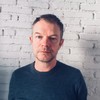Police forensic officers work at the scene where a woman was shot dead in the Ribersborg district of Malmo in 2019. Photo: Johan Nilsson/AFP via Getty Images.
Guns seized by police. Photo: Swedish Police.
Rawa Majid, nicknamed the “Kurdish Fox”. Photo: Swedish Police.
Amir Mekky after his arrest in Dubai in 2020. Photo: Dubai Media Office.
Police officers point to images of seized weapons in Rinkeby police station in 2022. Photo: Jonathan Nackstrand/AFP via Getty Images.
A police vehicle is parked outside an apartment block in north-western Stockholm after two children was found seriously injured in 2021. Photo: Jonas Ekstromer/AFP via Getty Images.
A 16-year-old hitman contracted to kill a Bandido member shoots and kills the wrong target at a Stockholm gym. Photo: Swedish Police.
Police officers secure evidences at the site where a twelve year old girl was shot near a petrol station in Botkyrka, south of Stockholm in 2020. Photo: Naina Helen Jama/TT News Agency/AFP via Getty Images.
